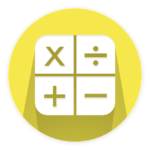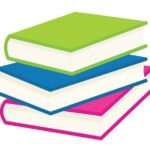Grade One Student Curriculum Expectations
English Language Arts
Building from their kindergarten experience, first-graders continue their literacy journey with greater confidence; they start combining skills and strategies systematically. Students choose books that increase in complexity, requiring the foundational skills from kindergarten. As a result, their reading stamina increases, they develop a fluid reading pace, and become increasingly more independent in their book selection. Students continue to read, write, and discuss fiction and nonfiction texts to learn how different sources help readers construct meaning about the world. Academic conversations help students apply foundational listening and speaking skills to learn how to understand, speak, and use words to communicate and actively engage within and beyond the classroom. Additionally, students’ writing stamina grows and their voices emerge when writing about what they are learning and their personal experiences. The ultimate goal of a balanced language arts curriculum is to build skills, independence, and passion to become lifelong readers, writers, and speakers.
Throughout the year, teachers use a variety of formal and informal assessments to examine students’ strengths and areas of focus to inform instruction to ensure all students progress toward grade-level expectations.
First-graders learn and apply social and emotional skills in a variety of ways to become self-aware and to nurture positive and respectful relationships with their teachers and peers. Creating a safe and inclusive community is foundational to a great year of learning for all.
Highlights of First-Grade Language Arts
- Learning from and enjoying books read and listened to.
- Using phonics (matching letters and sounds) and word analysis skills to figure out unfamiliar words when reading and writing.
- Reading a variety of grade-level texts with appropriate speed, accuracy, expression, and understanding.
- Learning and developing the writing process and strategies to write to share learning, describe an event, express an opinion, or tell a story.
- Participating in class conversations to understand others, build vocabulary, and communicate thoughts and needs.
- Building curiosity by asking and answering questions about stories or other information.
Visit Michigan K-12 English Language Arts Standards for a complete view of the first-grade standards your child will be working toward in English language arts.
 Ideas for Supporting Your Reader/Writer
Ideas for Supporting Your Reader/Writer
- Set aside a special time every day to read to your child.
- Place books in different places around your home and change them monthly.
- Establish a family reading time.
- Go online to your local library website to view a calendar of fun events (often at no cost for participation).
- Apply for a library card so all family members can check out books on subjects that interest them.
- Show interest in your child’s reading by asking your child about the books he/she is reading.
- Encourage your child to write a thank you note or letter to a family member or friend.
- Start a family vocabulary box or jar; have everyone write down new words they discover, add them to the box, and use the words in conversation.
- Talk about the events of the school day.
- Keep favorite books in the car.
- Start a family journal to capture the daily events in writing or drawings.
- Go to a play or musical with your child. Discuss the way the actors bring the words to life.

Social Studies
My School and Family
Through a study of families and school life, first-graders learn the fundamentals of social studies. They begin to explore history and learn that people and places change over time. Discussing the needs of families, they learn the economic concepts of goods and services. They begin to examine their environment and surroundings, growing in their understanding of the interaction between people and places. Developing rules for their own classroom and learning to follow school rules, they learn the basic rules that govern people in a free society who live and work together.
Visit the Michigan Social Studies Academic Standards for a complete view of the grade standards your child will be working toward in social studies. This curriculum is also aligned with the College, Career & Civic Life Framework for Social Studies State Standards.
 Ideas for Supporting Your Social Scientist
Ideas for Supporting Your Social Scientist
- Discover Michigan together. Bring history alive by visiting historic homes, sites, and local museums.
- Discuss your family stories and history. Encourage your child to ask relatives questions about their lives. Put the information together in an album or brainstorm different ways to tell family tales, such as poems or short stories.

Science
First-graders are curious about the world and how it works. Throughout the year, students engage in science learning experiences to connect their thinking, make observations, formulate new ideas, and make sense of the natural world and how it works. First-graders learn to apply Science and Engineering Practices to think like scientists.
Highlights of First-Grade Science
First-grade students will explore the relationship between sound and vibrating materials as well as between the availability of light and the ability to see objects. During the first-grade year, students also observe, describe, and predict some patterns of the movement of objects in the sky. They will also learn about the life needs of animals, basic life cycles, and that animals share some but not all characteristics of their parents.
FHPS focuses on instruction and learning of the Michigan Science Standards. Click on the link to view the first-grade standards your child will be working toward in science.
 Ideas for Supporting Your Scientist
Ideas for Supporting Your Scientist
- Talk with your child to listen and learn what they are curious about.
- Science in the kitchen: Follow recipes and observe what happens as ingredients are added.
- Science in the backyard or park: Notice what your senses observe. Discuss the types of birds, animals, and insects that you observe

Mathematics
Building from their kindergarten experience, first graders develop their mathematical skills while applying the practices mathematicians use. They…
- Make sense of problems and persevere in solving them.
- Reason abstractly and quantitatively.
- Construct viable arguments and critique the reasoning of others.
- Model with mathematics.
- Use appropriate tools strategically.
- Attend to precision.
- Look for and make use of structure.
- Look for and express regularity in repeated reasoning.
First-grade mathematicians are encouraged to be creative problem solvers and flexible thinkers. They work through challenging problems in small groups and on their own, developing independence and persistence. They develop their fluency skills by playing with numbers which allows them to think flexibly with methods and strategies to solve problems efficiently and accurately.
Highlights of First-Grade Mathematics
Operations and Algebraic Thinking
- Represent and solve problems involving addition and subtraction.
- Understand and apply properties of operations and the relationship between addition and subtraction.
- Add and subtract within 20.
- Work with addition and subtraction equations.
Number and Operations on Base 10
- Extend the counting sequence.
- Understand place value.
- Use place value understanding and properties of operations to add and subtract.
Measurement and Data
- Measure lengths indirectly and by iterating length units.
- Tell and write time.
- Represent and interpret data.
Geometry
- Understand and manipulate shapes and their attributes.
Visit the Michigan Mathematics Academic Standards for a complete view of the first-grade standards your child will be working toward in math.
 Ideas for Supporting Your Mathematician
Ideas for Supporting Your Mathematician
- Play games and solve puzzles while talking about your thinking and asking your child to explain his or her thinking.
- Look for opportunities to count and tally the numbers of objects in the real world.
- Ask your child to tell the time of the hour (early in the year) to the half hour (later in the year).
- Name and describe attributes of geometric shapes in your house, at the grocery store, along the ride to school, etc.
- Build with blocks. Talk about and breaking apart designs to form new shapes.
- Measure items at home with paper clips (no gaps), and later in the year with one paper clip (moving along).
- Visit the Standards for Mathematical Practice for Parents.
- Look for “word problems” in real life. Some examples might include:
- If you open a new carton of a dozen eggs, and you use four eggs to cook dinner, close the carton and ask your child how many eggs are left.
- While putting away toys into bins, count the number of toys in two bins and ask your child how many more are in one bin compared to the other.
- Play the “I’m thinking of a number” game. For example, “I’m thinking of a number that makes 11 when added to 8. What is my number?


